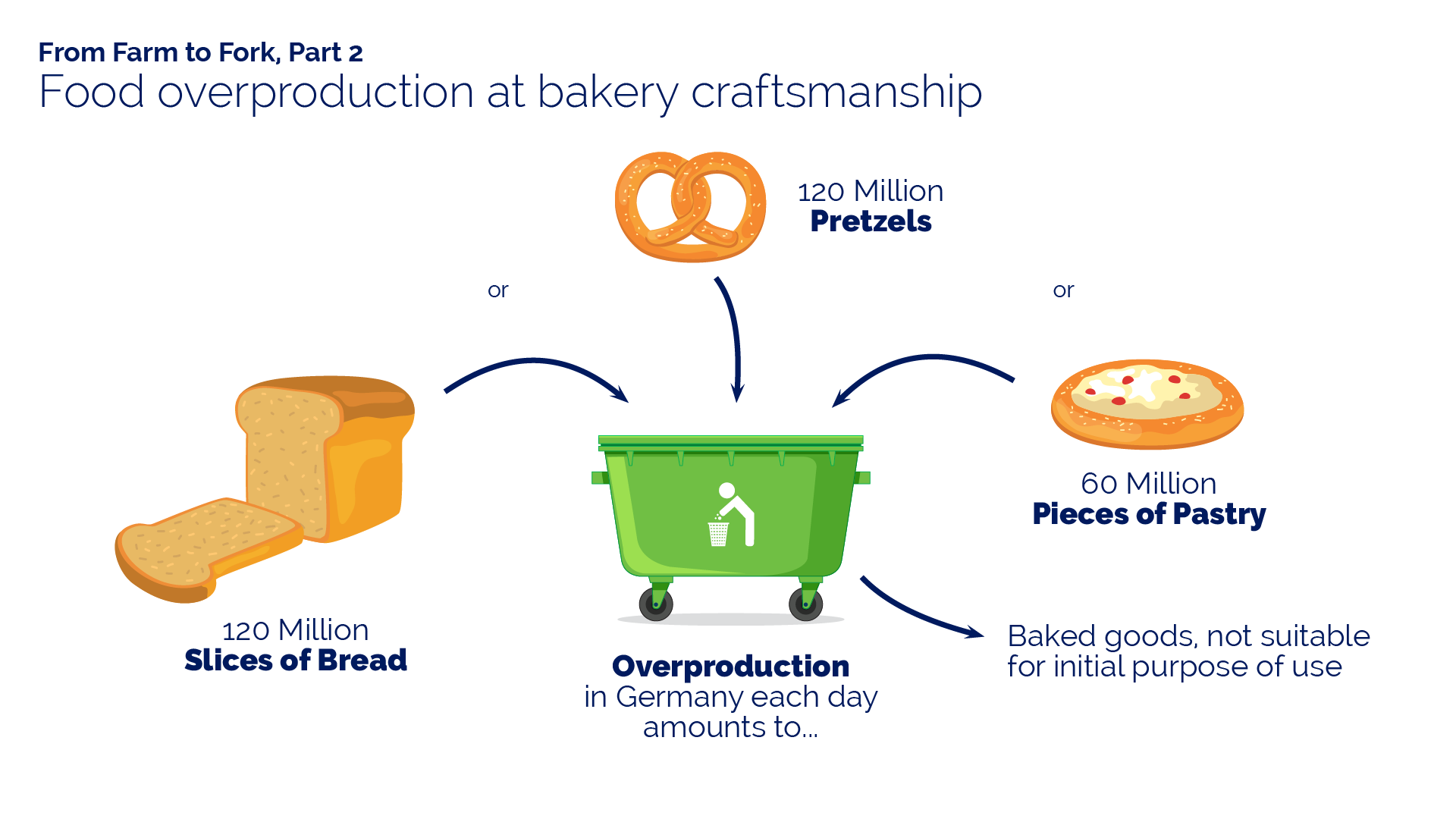Always baking the right rolls: cutting costs through machine learning in the bakery
Every year, 600,000 tons of bread and baked goods are thrown away in Germany. This waste is not only irresponsible in terms of sustainability, but also costs bakeries a lot of money. Based on a study by the World Wildlife Fund (WWF) ConMoto has calculated that a small artisan bakery throws away baked goods with a retail value of 35,000 euros a year, while an industrial large-scale bakery throws away up to 77,000 euros a year – per branch! The reason: too many rolls, cakes or breads are baked, or not the right assortment in the right quantity at the right time.

Because the baker’s gut feeling is often deceptive, ConMoto has developed a data-based prediction model that uses sales data and machine learning techniques: An adaptive algorithm factors in real-time data such as time of day, weather conditions or special events to provide clear recommendations on which quantities of which type of goods should be offered at a given time. This prediction is generated individually for each bakery store.
Five advantages of a learning forecast model
- Forecast quality accurate to the day and allowing for improved simulation and planning options for purchasing, production and sales
- Cost reduction by avoiding overproduction
- Increased sales in each store because goods demanded by customers are available in the right quantities
- Higher customer satisfaction because customer demands can be met and goods are fresher
- Greater sustainability and environmental friendliness due to reduced throwaway quantities
How the predictive model works
The prediction model is based on various data-driven algorithms and uses internal data from the stores – for example, sales figures of bakery products, time of sale, prices, inventory, throwaway quantities at item level – and combines it with external information such as weather forecasts, events in the vicinity of a bakery (such as soccer matches or train arrivals) and the time of day. The algorithm’s mathematical functions factor in values from the past and weight them. The algorithm learns from the constantly updated data and adjusts the weightings accordingly. The mathematical functions form a neural network that recognizes patterns and structures in large amounts of data. It is precisely these regularities that make individual, detailed predictions about customer behavior possible.
A typical ConMoto machine learning/forecasting project consists of four phases:
- Data: Data collection, data mining and data analysis
- Model development: concept creation of the model, model design, programming, debugging, interfaces
- Piloting: prototype development, testing and analysis of test results, model optimization and training
- Roll-out and implementation to all stores
This data-based approach and mathematical modeling significantly improve the reliability of predictions regarding the quantities of merchandise required over the course of the day and week, resulting in, among other things, a significant reduction in throwaway quantities.




 Deutsch
Deutsch